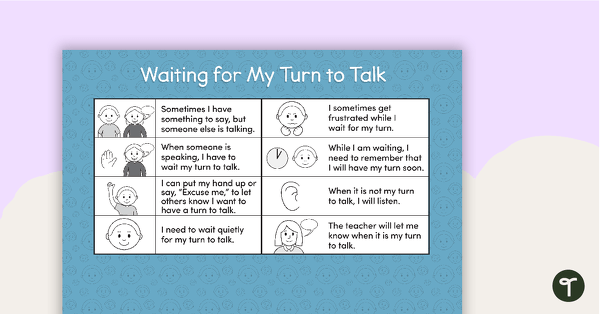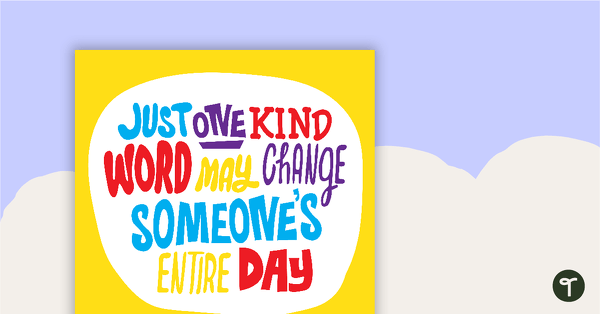Behaviour Teaching Resources
Bring your behaviour management to the next level with printables and digital teaching resources created by teachers for teachers like you!
This collection of teacher-created resources is designed to support primary teachers as they implement their behaviour management strategies with printable reward charts, motivational posters and more!
Looking for tips and ideas to make your behaviour management more successful? Take a peek at some strategies from our teacher team!
What Is Behaviour Management?
Behaviour management is a proactive strategy for teachers to handle behaviour in the classroom. By setting up solid pupill organisation strategies, creating clear rules and expectations and providing consistent feedback, teachers set pupils up for success.
A good behaviour management strategy will give pupils:
- Specific expectations
- Positive reinforcement when expectations are met
- Fair and consistent consequences when expectations are not met
For example, of the most popular behaviour management strategies these days is CHAMPS, which stands for Conversation, Help, Activity, Movement and Participation. The goal is to provide pupils with an instructional structure that promotes responsibility and motivates students.
Why Is Behaviour Management Important?
Strongly backed by research, behaviour management strategies like CHAMPS have been shown to:
- Provide pupils with a sense of connection to school and their peers
- Promote a productive learning environment
- Minimise classroom disruptions
Behaviour Management Strategies
Before we dig in too deeply, it's worth stressing that the goal of the strategies you're about to read is to accentuate the positive, that is, to keep control of the behaviour in your classroom in a positive way.
We've also included a mix of strategies that will help you prevent negative behaviour as well as some simple things you can do to curb unwanted behaviour in the classroom.
Redirect
This technique is simple, yet effective. When you notice a child is off-task, simply move their attention from one thing to another. For example, if one pupil is distracting another pupil, you may direct their attention to the work at hand by saying you'll be over in a few minutes or simply asking that pupil what they are up to.
Ignore Secondary Behaviour
When a child is being warned about inappropriate behaviour, you may notice a secondary behaviour, such as an eye roll or a delayed response to a question. This behaviour is often to avoid humiliation in front of peers.
If the initial poor behaviour has stopped, ignoring the secondary behaviour — as long as no one is in danger and it hasn't caused additional classroom disruption — can prevent the situation from escalating. If you feel you need to, you may opt to talk to that pupil one on one after the lesson to reflect on the situation (without the audience of the other pupils).
Plan Your Transitions
A transition in a classroom is when a pupil moves from one activity to another. It can be a significant change such as transitioning from lunch back into the classroom or a more minor change such as transitioning from time on the carpet back to their seats.
For little brains, transitions can be tricky as they need to go from an active state to a focused state ready for learning, and this is where inappropriate behaviour may start to fester.
Planning for how you and your pupils should transition can help avoid this situation from escalating. A simple transition for the example of going from lunch back to class, for example, could be to use a fun movement such as walking like a ballet dancer back to class.
Make sure to explicitly teach pupils what they should be doing during transitions, so they know the sort of behaviour you expect!
Offer Choices
Providing a pupil choice is extremely powerful! It makes them feel like they are in the power seat, when in fact, you've planned it out beautifully! When you notice inappropriate behaviour, instead of issuing a demand, offer a pupil a choice of two options. The first choice would be the route you'd like them to take. The second is the consequence of not taking the first option.
For example, 'Zane, would you like to remove yourself from the distracting spot you're sitting in, and complete your work? Or, would you like to stay with me at lunchtime to complete the work then?'
You'll find that most of the time, the pupil will take the better option in this scenario.
Attention Grabbing
This is similar to the 'redirect' option, but this is a strategy to use if a number of pupils are starting to get off task. Use some fun attention-grabbing techniques like call and response ( you can download our Attention Grabbing Phrase Cards and use those!).
You can then redirect the group's attention back to the work by providing some more information that may support them in finishing off the task.
Use Positive Non-Verbal Reminders
You don't always have to use your voice for your behaviour management to work. Non-verbal reminders can be equally powerful and limit the disruption to the class. Simple non-verbals like stopping what you're saying and smiling at the pupil who may be off task is sometimes all that is needed for some pupils. This lets them know you know they're off-task in a gentle way.
Another non-verbal reminder is to simply lower your body down to the level of the child while you continue with the teaching, or, a simple tap on their desk as you walk past.
Set Up a Calm Corner
Little children experience BIG emotions, and often when they are trying to deal with these big emotions, they struggle with self-regulation.
Another behaviour management strategy that will work for some children is just some time away from the hustle and bustle of the classroom. If you have the space, set up a corner of the classroom for pupils to 'chill out.' You can fill the space with fidget toys, weighted blankets, wobble cushions, a tub of sensory toys and similar objects, plus some mindful colouring sheets!
If you are noticing a pupil that isn't responding to the smaller behaviour management strategies, 5 minutes in the chill-out corner/area may help this pupil.
Another idea — Sending a pupil to another teacher with a 'note' that says something simple such as 'John needed some space.' This gets the pupil out and about, and gives them some purpose by having the very important job of delivering the note to the other teacher.
Utilise Movement
We know a pupil's attention span is short, and yet we expect them to sit and listen and use their brains for long periods of time ... often longer than their age allows. Ensuring you have had a lot of movement integrated into your day is a great way to limit the number of behaviour situations you may encounter in a day.
It could be as simple as a 'stop work and stretch at your desks' type situation, but you may be surprised by how planning these movement breaks into your day can improve behaviour in the classroom.
Desk Arrangements
Strategic desk arrangements in the classroom can significantly improve behaviour management by fostering a structured and organised environment. Check out Tes Class Charts - our classroom management software here to help with setting up seating plans, managing behaviour and more.
- Plus Plan

Abraham Lincoln Quote Poster - Roses
A motivational poster featuring a quote from Abraham Lincoln.
- Plus Plan

Plain Purple - Award Certificate
A plain purple-themed award to provide positive feedback and encouragement to your students.
- Plus Plan

Chill Out Blue - Letters and Numbers Bunting
Chill out blue themed letters and numbers bunting.
- Plus Plan

Try 3 Before Me Poster
Print a '3 before me' classroom poster to encourage students to try 3 things before asking for help.
- Plus Plan

Desk Reward Chart - Zig-Zag
A set of 8 colourful zig-zag style charts to reward positive behaviour or accomplishments.
- Plus Plan

Superheroes - Desk Reward Chart
A set of superhero themed desk charts to motivate and reward students in the classroom.
- Plus Plan

WOOP Motivational Behaviour Strategy Poster and Worksheet
A poster and worksheet set for Gabriele Oettingen's WOOP (Mental Contrasting with Implementation Intentions) technique for setting and reaching goals.
- Plus Plan

Plain Purple - Star Student Badges
A set of star student badges with a plain purple theme.
- Plus Plan

The Difference Between Good and Great is Refusing to Give Up - Motivational Poster
A Kristian Wells motivational poster to brighten up your learning space.
- Plus Plan

Captain Yet Goal Tracker (Captain Yet Version) – Template
A Captain Yet template for students to track the progress of their goals.
- Plus Plan

Captain Yet Goal Sticker Chart (Captain Yet Version) – Template
A Captain Yet template for students to track the progress of their goals.
- Plus Plan

Teal Chevron - Star Student Badges
A set of star student badges with a teal chevron theme.
- Plus Plan

Teal Chevron - Award Certificate
A teal chevron themed award to provide positive feedback and encouragement to your students.
- Plus Plan

Adventures are the best way to learn - Positivity Poster
A positivity poster to brighten up your learning space.
- Plus Plan

Brain Break Activities with Instructions
Signs and posters with games to play with your class when they need a quick brain break!
- Plus Plan

Pencils - Star Student Badges
A set of star student badges with a pencil theme.
- Plus Plan

If You Cannot Think of Great Ideas, Do Great Things with Small Ideas - Motivational Poster
"If You Cannot Think of Great Ideas, Do Great Things with Small Ideas." - Kristian Wells
- Plus Plan

Only be better than the person you were yesterday – Positivity Poster
A positivity poster to brighten up your learning space.
- Plus Plan

Be the Change You Want to See in the World - Gandhi - Motivational Poster
"Be the change you want to see in the world." - Mahatma Gandhi
- Plus Plan

I Have Not Failed - Motivational Poster
"I have not failed, I've just found 10 000 ways that won't work." - Thomas Edison
- Plus Plan

Every Student Can Learn – Positivity Poster
A positivity poster to brighten up your teaching space.
- Plus Plan

End of Year Message – Award Certificate
Make saying goodbye to this year's class a little easier with these End of Year Messages.
- Plus Plan

Social Stories - Waiting for My Turn To Talk
A social story to develop strategies when waiting for the appropriate time to talk.
- Plus Plan

Social Stories - Using My Quiet Voice at School
A social story to remind students to use their quiet voice when they are inside.
- Plus Plan

Pencils - Award Certificate
A pencil themed award to provide positive feedback and encouragement to your students.
- Plus Plan

Social Stories - Sharing with My Friends
A social story to develop skills and strategies for sharing with others.
- Plus Plan

Just One Kind Word Positivity Poster
A positivity poster to brighten up your learning space.
- Plus Plan

Social Stories - Saying Sorry
A social story to develop strategies and skills for saying sorry to others.
- Plus Plan

Social Stories - Rules for School
A social story to remind students of the rules for school.
- Plus Plan

Social Stories - Play Time
A social story to remind students when they can play.
- Plus Plan

Crayons - Award Certificate
A crayon themed award to provide positive feedback to your students.
- Plus Plan

Social Stories - Playground Rules
A social story to remind students of the rules for the playground.